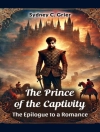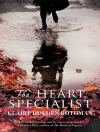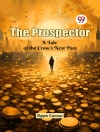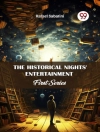The Book of Gothic Tales serves as an evocative journey into the unsettling and mysterious realms that define Gothic literature. This anthology masterfully curates an array of stories rich in atmospheric tension, exploring themes such as the supernatural, existential dread, and the dark recesses of the human psyche. With an impressive collection of literary styles ranging from the poignant and haunting to the breathtakingly suspenseful, this volume showcases the diverse and profound storytelling capabilities of the genre. Among the remarkable pieces, readers will encounter narratives that evoke chilling introspection and others that summon the eerie and fantastic, reflecting the Gothic spirit at its finest. The contributing authors of The Book of Gothic Tales are towering literary figures whose works traverse time and culture. Their collective contributions trace back to the Romantic era’s fascination with emotion and nature, continuing through the fin-de-siècle’s exploration of the bizarre and the uncanny. This anthology is anchored by the contributions of literary giants such as Dickens, Poe, Austen, and Shelley. Together, they paint a vast canvas that enriches the reader’s experience, capturing the zeitgeist of Gothic conventions while also transcending its conventional boundaries through innovative storytelling. Readers seeking an enthralling exploration of Gothic literature will find this anthology an invaluable resource. The Book of Gothic Tales offers an unparalleled foray into a world of dark beauty and transcendent horror, crafting a dialogue between authors that spans continents and centuries. It is more than a mere collection; it is a scholarly treasure, inviting readers to immerse themselves in a comprehensive study of the Gothic form, enlightening them with its rich tapestry of narratives and its enduring legacy.
Sobre el autor
Charles Dickens (1812-1870), an emblematic figure in Victorian literature, remains a towering literary figure renowned for his acute social commentary and unforgettable characterizations. Dickens crafted narratives that intertwined comedy and tragedy, realism and fantasy, which mirrored the complexities of the industrializing society in which he lived. While ‘The Book of Gothic Tales’ is not one of his well-known works and might indeed be misattributed or an unconventional collection not typically associated with his oeuvre, his mastery in the genre of the novel is indisputable. Esteemed works such as ‘Great Expectations’ (1861), ‘A Tale of Two Cities’ (1859), and the iconic ‘A Christmas Carol’ (1843) reflect his dexterity in exploring themes of societal inequality, redemption, and the human condition. Through vivid storytelling and piercing wit, Dickens’ novels often comment on the class systems, the plight of the impoverished, and the social reform imperative to Victorian England. His distinct blend of humor, pathos, and robust narrative voice has solidified him as a cornerstone of English literature. Dickens’ literary style frequently incorporated elements of the gothic, especially in novels such as ‘Bleak House’ (1852) and ‘Oliver Twist’ (1837), leveraging dark atmospherics and dramatic tension to critique and satirize his era’s moral and legal institutions. His legacy persists, not only through his own expansive body of work but also through his influence on the generations of writers that have followed.












